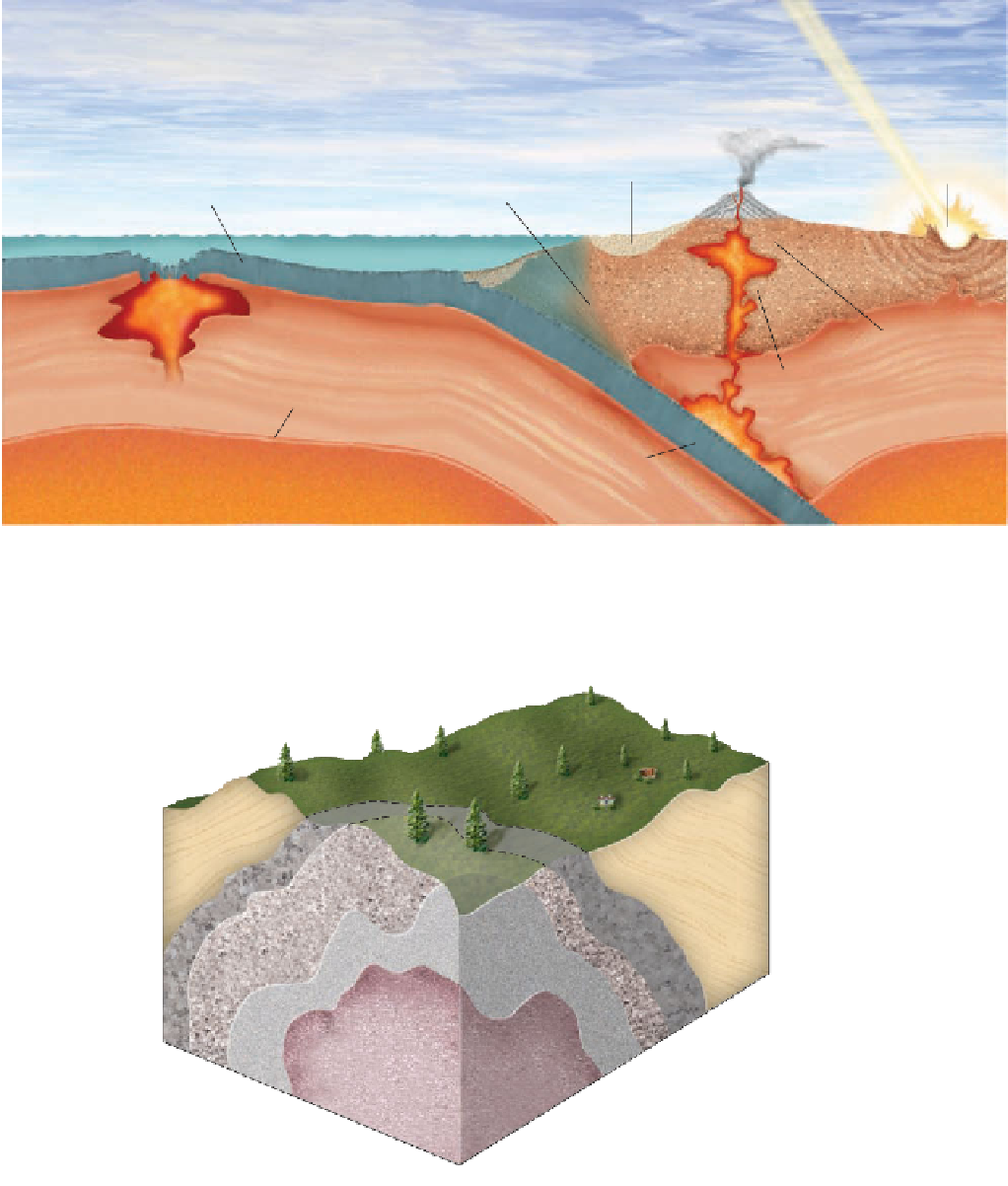Geology Reference
In-Depth Information
temperature in the surrounding rock may last long enough
for a larger area to be affected.
An
aureole
(
intrusion and its aureole may be either sharp or transitional.
Metamorphic aureoles vary in width depending on the size,
temperature, and composition of the intruding magma,
as well as the mineralogy of the surrounding country rock.
◗
Figure 7.5) is the area of metamorphism
surrounding an intrusion, and the boundary between an
Environments of metamorphism
(T = temperature, P = pressure)
Deeply buried
sediments
(low T, moderate P)
Water-saturated
seafloor lava flows near
mid-ocean ridges
(moderate T, low P)
Meteorite impacts
(ultrahigh T and P)
Active accretionary
wedges (low T, high P)
Country rock
in active mountain
belts (moderate to
high T, moderate
to high P)
Boundary
between upper
and lower mantle
(high T, high P)
Country rock
around active
plutons
(high T, low P)
Subducting
oceanic lithosphere
(high T, high P)
◗
Figure 7.4
Environments of Metamorphism The type of metamorphism that results depends largely
on which of the three metamorphic agents was dominant. Illustrated here are some of the common
metamorphic environments associated with plate movement, and whether the temperature and pressure
in this environment is considered low, moderate, or high. The third agent of metamorphism, fl uid activity,
although playing an important role in metamorphism, isn't shown here, but is discussed in the text.
Unaltered
country rock
Outer zone of spotted slates
Intermediate zone with some biotite
Inner andalusite -
cordierite-hornfels
zone
Granite
pluton
◗
Figure 7.5
Metamorphic Aureole A metamorphic aureole, the area surrounding an intrusion,
consists of zones that refl ect the degree of metamorphism. The metamorphic aureole associated with
this idealized granite pluton contains three zones of mineral assemblages refl ecting the decrease
in temperature with distance from the intrusion. An inner andalusite-cordierite hornfels zone forms
adjacent to the pluton and is refl ective of the high temperatures near the intrusion. This is followed by
an intermediate zone of extensive recrystallization in which some biotite develops, and farthest from
the intrusion is an outer zone characterized by spotted slates.


Search WWH ::

Custom Search